Key takeaways
- Tension in film is constructed through subtle details, such as micro-expressions and pauses, which create a feeling of unease.
- David Fincher’s style emphasizes control and restraint, using shadow, lighting, and deliberate pacing to enhance suspense.
- Effective storytelling in film reviews involves teasing the audience by revealing just enough to spark curiosity, mirroring the tension experienced in the films.
- Emphasizing silence and small behaviors can significantly heighten tension, making viewers feel intimately connected to the characters’ emotional states.
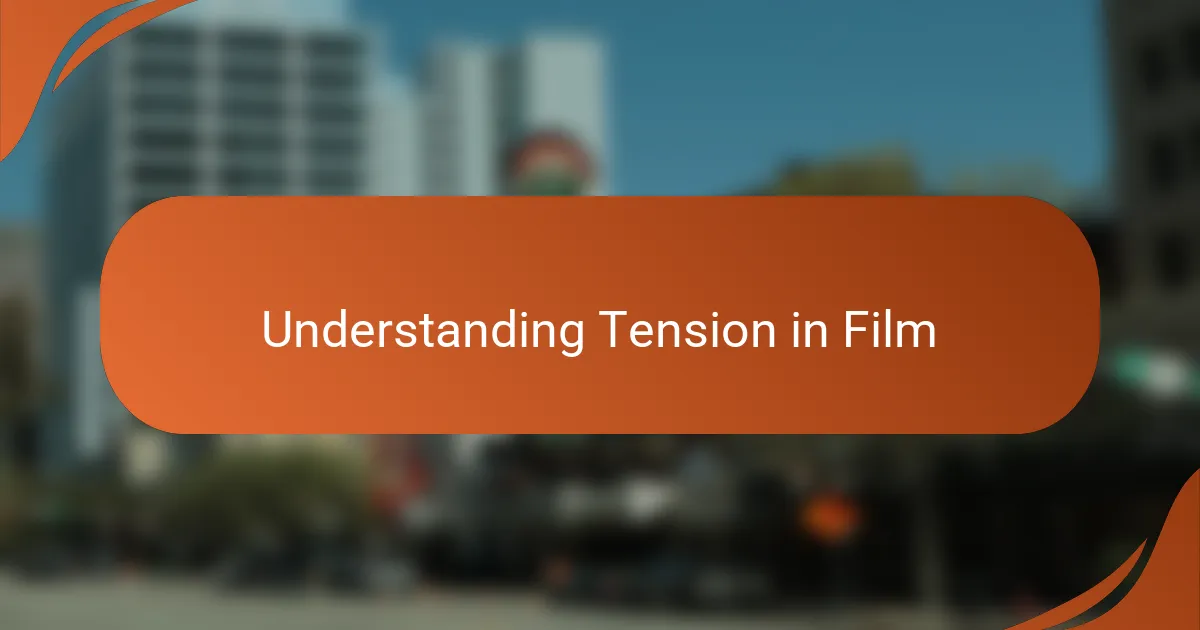
Understanding Tension in Film
Tension in film is that electric feeling you get when every frame seems to hold its breath, waiting for something to snap. I sometimes find myself gripping the armrest, heart racing, not just because of what’s on screen but because the filmmaker has masterfully crafted uncertainty. Have you ever noticed how silence can be louder than music in building suspense?
For me, tension isn’t just about high stakes or explosions; it’s in the subtle shifts—an offbeat glance, a barely audible sigh. These moments sneak under your skin and raise a quiet, persistent whisper of unease. They remind me how film can manipulate time and space, making a few seconds stretch endlessly, drawing you deeper into the story.
I often wonder how directors balance what they reveal with what they hold back. Isn’t it fascinating how the unknown can grip you tighter than the known? That, to me, is the heartbeat of tension—teasing your mind, pushing your emotions to the edge without letting you fall completely.
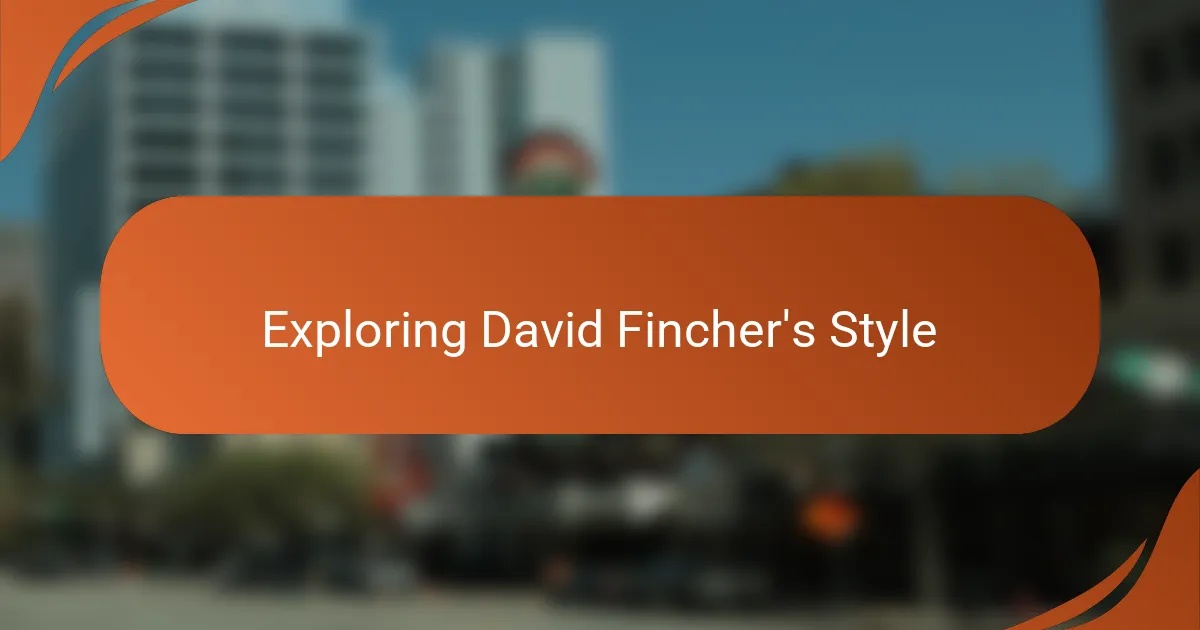
Exploring David Fincher’s Style
David Fincher’s style has always fascinated me because of the way he meticulously constructs tension. His use of shadow and muted lighting makes every frame feel claustrophobic, almost like you’re peering into a secret you’re not supposed to see. I remember watching “Se7en” and feeling as if the darkness itself was a character, thickening the suspense with every flicker of the screen.
What intrigues me most about Fincher is his obsession with detail—every movement, every pause feels deliberate, almost surgical. Have you ever noticed how his camera rarely rushes? It lingers just long enough to make you uncomfortable, creating a slow-burning anxiety that’s impossible to ignore. From my experience, this slow unraveling is what makes his films so addictive; you’re constantly on edge, wondering what’s coming next.
He also has this knack for blending technology with raw human emotion, which I find unique. The cold, precise aesthetic contrasts with the chaos inside his characters, making the tension feel not just external but deeply internal. It’s like you’re not only watching a thriller unfold but also being invited to sit inside the mind of someone barely holding it together. That duality is, to me, the essence of Fincher’s gripping style.
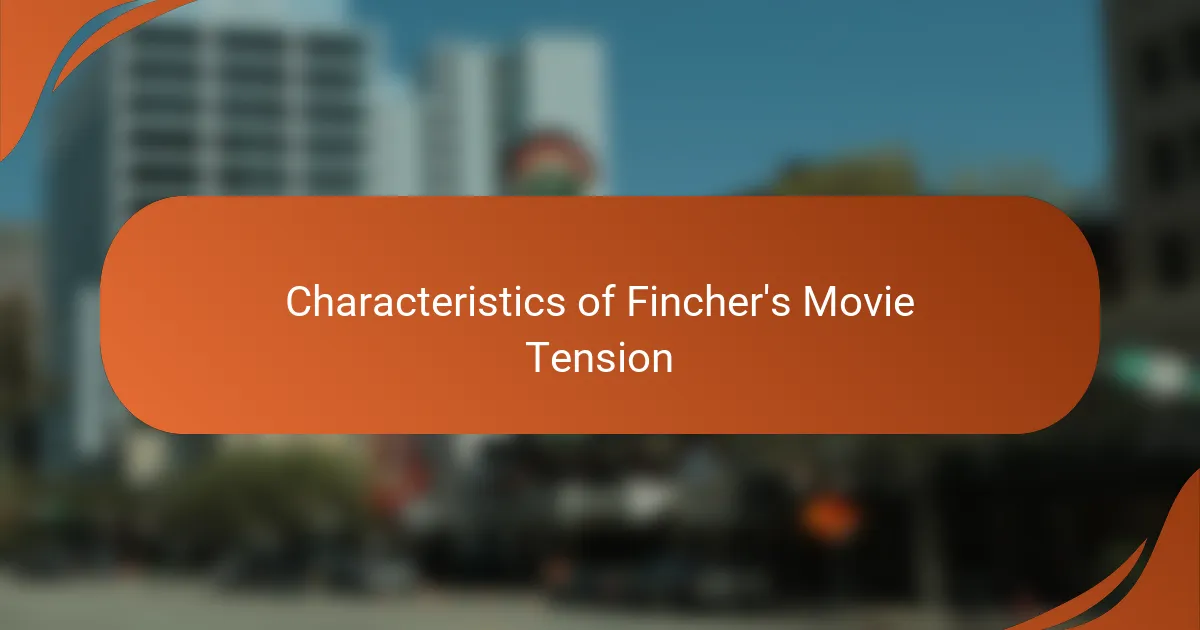
Characteristics of Fincher’s Movie Tension
What I find most striking about Fincher’s tension is how it simmers beneath the surface rather than exploding outright. It’s in the small, almost imperceptible details—the way a character’s eyes dart or a hand twitches—that the unease builds. Have you ever caught yourself holding your breath during these quiet moments, sensing that something terrible is just about to unfold?
Fincher’s tension feels so precise because it’s born from control. He wields silence as a weapon, stretching out pauses until you start to question what’s real and what’s lurking in the shadows. From my experience, this slow, surgical pacing draws me in more deeply than any sudden scare ever could. It’s a patient tease, pulling you toward the edge of your seat one deliberate frame at a time.
I also appreciate how Fincher balances tension with intimacy. His scenes often feel tightly framed, putting you almost uncomfortably close to the characters’ inner turmoil. Does this proximity make the tension more personal? Absolutely. It’s like being trapped in a room with someone unraveling—and I think that’s what makes his style so haunting and unforgettable.
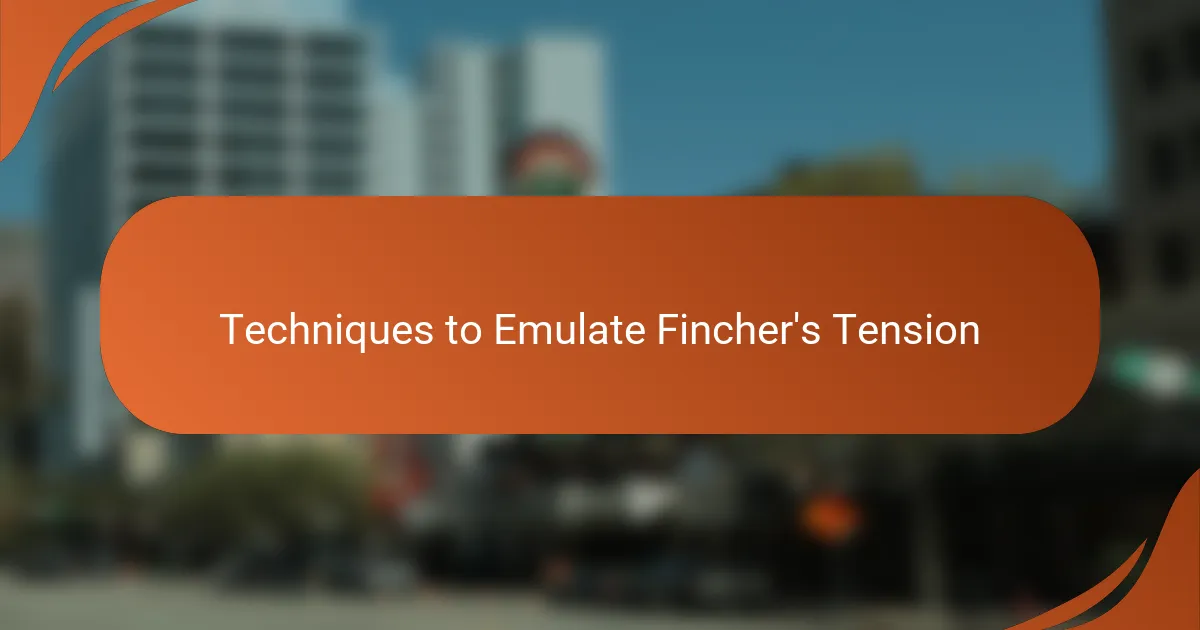
Techniques to Emulate Fincher’s Tension
One technique I’ve found useful in emulating Fincher’s tension is mastering restraint. Instead of rushing through scenes, I let moments linger—pauses stretch just enough to make you squirm with anticipation. Have you ever noticed how this slow burn forces you to lean in, to fill the silence with your own unease? That’s where the magic happens.
I also try to focus on the subtle details Fincher obsessively captures—micro-expressions, fleeting glances, the way a hand hesitates before acting. When I pay attention to these tiny cues, the tension feels more authentic, like it’s simmering right under the skin. It’s amazing how these minute touches can shift a scene’s entire atmosphere without any loud noise or dramatic action.
Lighting and framing are another tool I experiment with to replicate Fincher’s style. Using shadows and tight close-ups, I aim to create a claustrophobic feeling, almost like the audience is trapped inside the character’s mind. Have you ever felt that uncomfortable intimacy in his films? Trying to recreate that closeness helps me immerse viewers in the tension, making every frame feel like a secret waiting to explode.
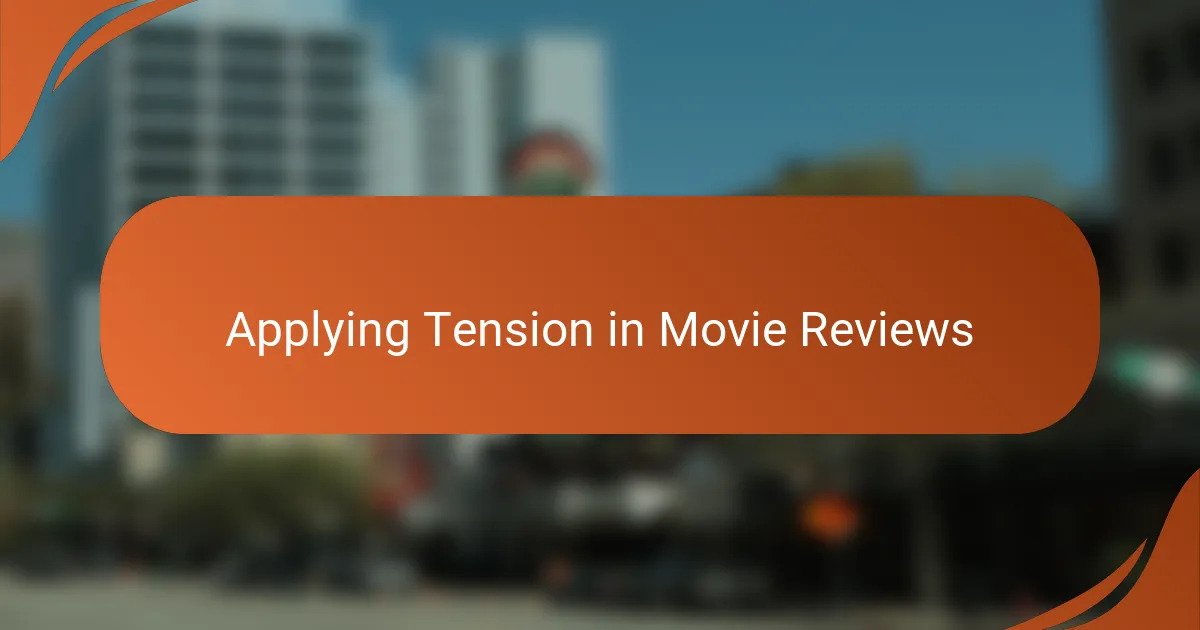
Applying Tension in Movie Reviews
When writing movie reviews, I find that applying tension is all about pacing my words as carefully as a director paces a scene. Instead of spilling spoilers or giving everything away, I tease the reader with just enough detail to spark curiosity—letting the story’s suspense build in their mind. Have you ever noticed how a well-placed pause in conversation can create anticipation? It works the same way in writing about film.
I also try to capture the emotional undercurrent—the unspoken conflicts and subtle anxieties that make a film linger in your thoughts after the credits roll. For example, when reviewing a Fincher film, I don’t just describe what happens, but how those tiny moments of discomfort slowly gnaw at you. This approach helps me convey tension not as an overt scream, but as a quietly growing sense of unease that pulls the reader in.
Another trick I use is focusing on the sensory details—the shadows, silences, and micro-expressions that Fincher wields like tools. Describing these elements really paints a vivid picture and invites readers to experience tension firsthand. Have you ever felt your pulse quicken just reading about a scene? That’s the kind of immersive tension I aim to create in my reviews.
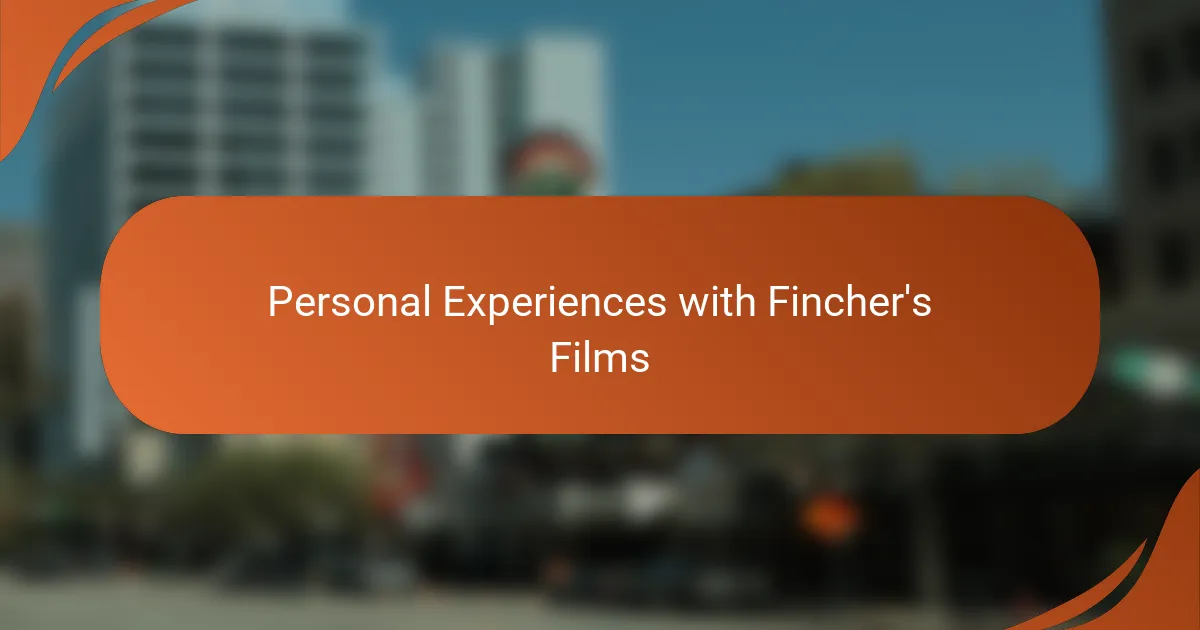
Personal Experiences with Fincher’s Films
There was a time I rewatched “Fight Club” late at night, and the tension wrapped around me like a thick fog. I found myself unable to look away, not just because of the plot twists, but due to that gnawing feeling Fincher cultivates—like something unsettling is always lurking just beneath the surface. Have you ever felt that quiet dread creeping up on you during a movie, even when nothing particularly dramatic is happening?
Watching “Gone Girl” was like being trapped inside a carefully constructed maze where every glance and quiet conversation felt loaded with hidden meanings. I remember catching myself analyzing every smile and silence, wondering what secrets were being concealed in that polished surface. It’s this unsettling intimacy that makes Fincher’s films stick with me long after the credits roll.
Sometimes, after experiencing a Fincher film, I find myself more aware of tension in everyday moments—like when a friend suddenly falls silent or a room feels too still. It’s strange how his storytelling heightens my sensitivity to unease in real life, reminding me that tension isn’t just a cinematic tool but a pulse beating beneath the calm. Have you noticed how art can shape the way you perceive even the smallest moments? This personal effect is, to me, part of what makes Fincher’s tension so powerfully immersive.

Tips to Embrace Fincher’s Tension Effectively
One tip I’ve learned from immersing myself in Fincher’s work is to embrace silence as an active ingredient in tension. It’s tempting to fill every moment with sound or action, but those pauses—those pregnant silences—are where the unease really grows. Have you ever caught yourself leaning forward during a quiet scene, your mind racing to fill the gaps? That’s exactly the feeling to chase.
Another approach I’ve found effective is focusing on micro-expressions and small, almost imperceptible behaviors. A fleeting eye movement or a slight hesitation can speak volumes, creating a tension so raw it feels like it’s happening right in the room with you. It’s these subtle details that transform a scene from just watching to almost eavesdropping on something dangerous.
Lastly, I’ve tried replicating Fincher’s precise use of framing and lighting to build that claustrophobic vibe. Using shadows strategically and opting for tight shots isn’t just about aesthetics—it’s about trapping the audience in the characters’ minds, making every frame pulse with suspense. Have you noticed how this visual closeness makes you feel uncomfortably intimate with the unfolding tension? Harnessing that closeness is a powerful way to pull viewers deeper into the story’s grip.